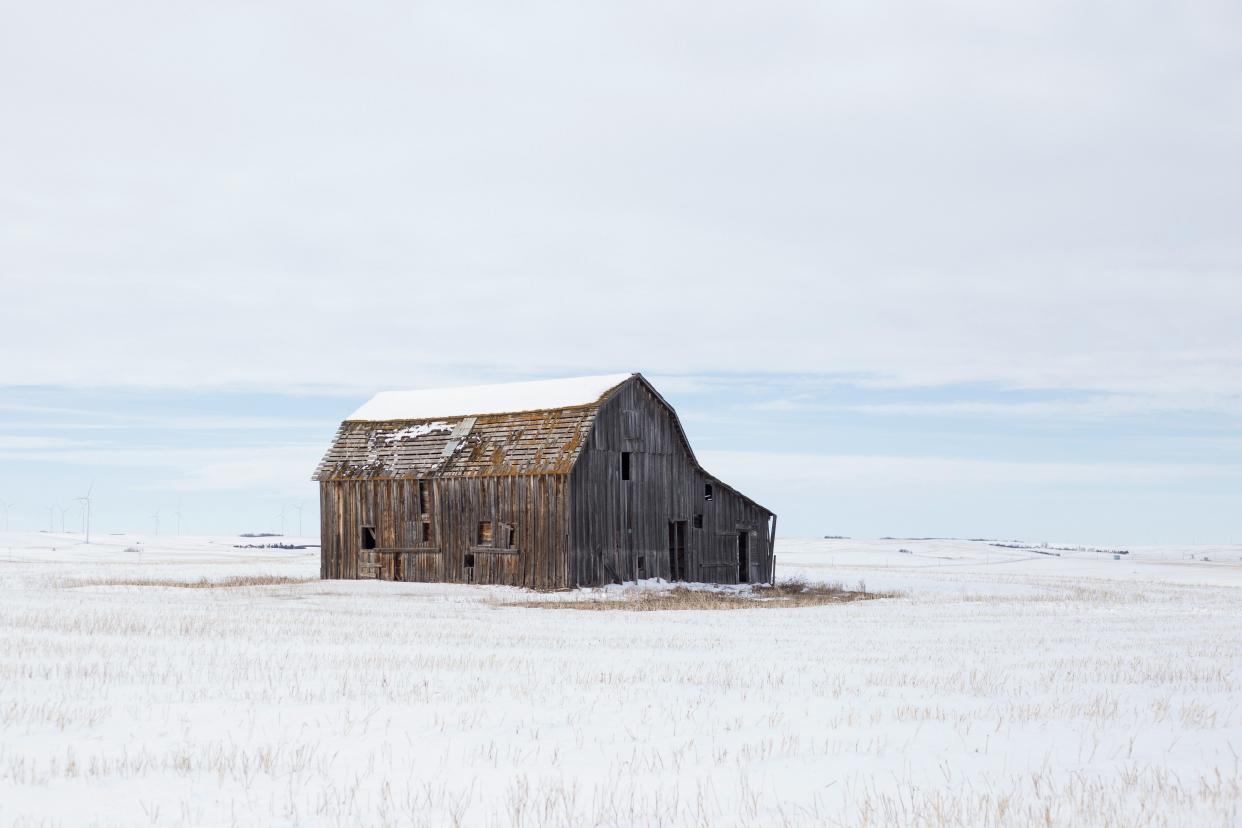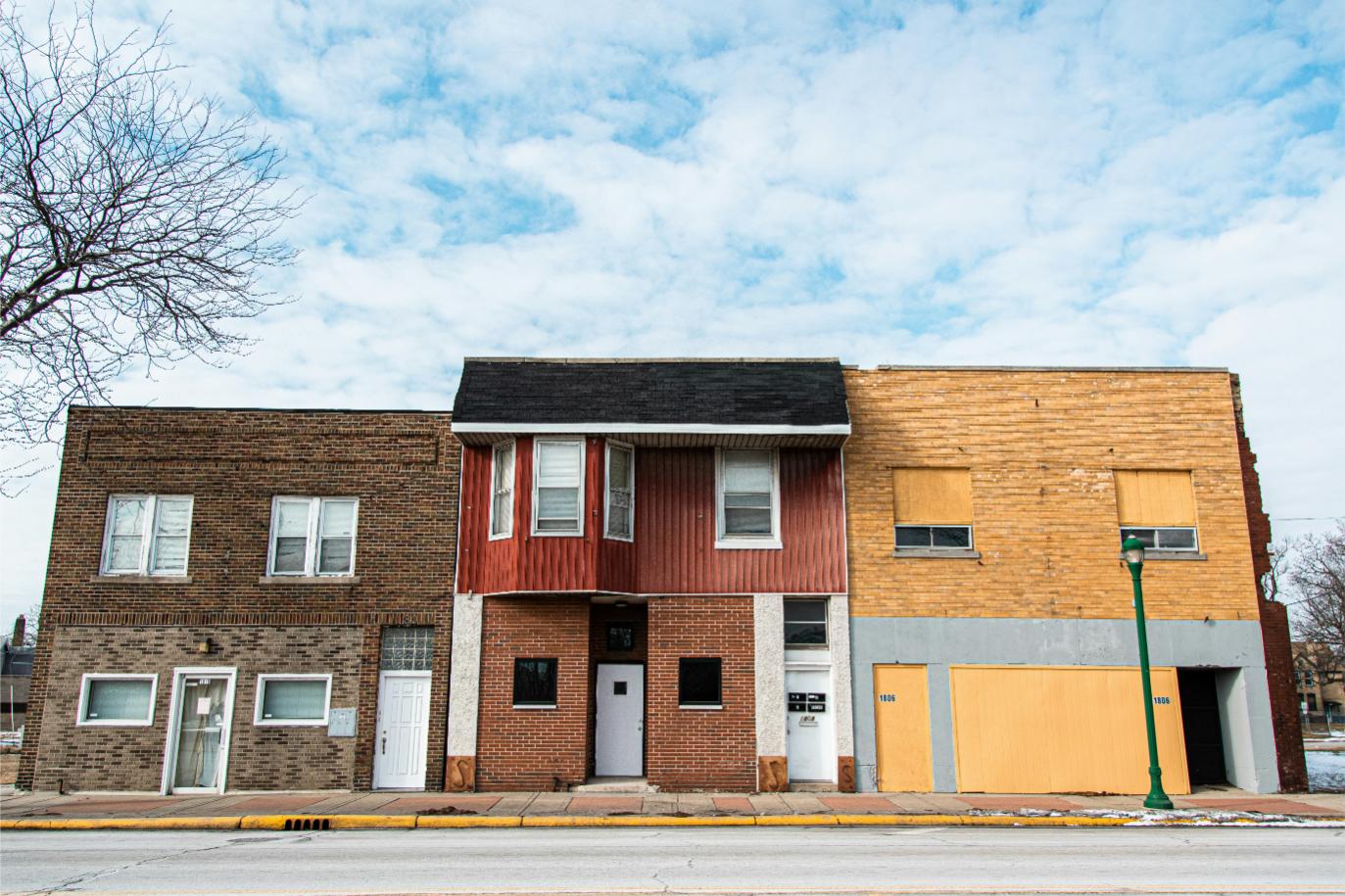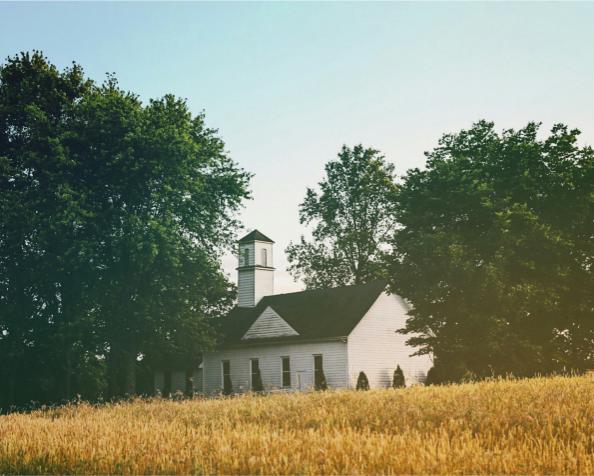Home / Setting / The World of Ask Again Later
Climate
As part of the upper Midwest, Oshtigwanegon has a wide range of seasonal weather. The winters are cold and prone to heavy snowfall that can leave roads impassable. Summers are hot and humid, and evenings are not infrequently spent huddled in basements waiting for tornado warnings to pass. Still, the people are used to it; most of them have lived here all their lives and know how to handle what the seasons bring, if with resignation rather than enthusiasm.

That’s not to say there’s no celebration around the changing of the seasons, though. The county fairgrounds are pretty close to Oshtigwanegon and bring a lot of excitement every summer, and the town harvest festival has a very competitive baking competition.
Getting Around Town
Back when the mine was booming, the nearby railway was used to transport nickel wherever it was needed to support the war effort. There used to be a passenger line on the railroad as well, but it closed in the ‘80s because it was no longer profitable to continue serving the area. Today, the abandoned railway depot stands as a testament to an earlier America, one that dreamed of uniting the wide swaths of country by rail.
Without any public transportation system to speak of, Oshtigwanegonians rely on cars to get around anywhere beyond walking distance. While the middle of town has all the basic conveniences one might need all in one place, this is a town where just about everyone gets a driver’s license when they turn 16, if not sooner to operate farming vehicles. Even those without much money prioritize saving up for a car, as there are many locations–whether it be the nearest hospital, the convenient big-box store, or many places of employment–that just can’t be reached on foot.
There is also a single Greyhound bus that stops in town once a week or so on its way to and from bigger towns and cities.
Geography and Local Sights
The Farmland and Prairie
Oshtigwanegon is nestled in the wide flat prairie of the Midwest. While part of the town comes up against the river bluffs one one side, most of what you can see for miles around is farmland—no mountains in sight, just rows upon rows of corn and soybean plants.

Farming has long been a staple of the region’s economy, although in recent times, life has become harder and harder for individual-owned farms. Most of the local farms now barely turn enough of a profit to sustain themselves, and some of them have sold out to corporations or developers.
Little remains of the native prairie—only 1% of tallgrass prairie still exists in the United States today, and the Oshtigwanegon area is no exception. Some of it is preserved in the handful of state parks scattered around the area, but by and large it’s been consumed by farmland.
State Parks and Landmarks
The wider area contains a number of state parks and other natural landmarks. Notable among them are Bone Mound State Park, Devil’s Realm State Park, and Skull Rock.
Bone Mound State Park is known for the titular large mound located in the park, as well as some preserved prairieland. Local legend among the settlers told that the mound was some kind of Indian burial ground, though attempts at excavation never uncovered anything—at least near the surface. The park is also said to be sitting on top of some potential oil resources, and is occasionally the subject of litigation trying to remove state protections from it.
Devil’s Realm State Park was donated to the state by the land’s owner in the 1800s, with the stipulations that it would be preserved so that the people could enjoy its natural features, and that it would be named “Devil’s Realm.” The park itself contains an extensive cave system that goes deep underground and is a favorite of both casual explorers and serious cave divers.
Skull Rock is most famous for being the location of the treaty-signing between the local Ojibwe chieftain and the European settlers who became Oshtigwanegon’s first families. The rock is thus named because of its resemblance to a skull, and is thought to be part of the reason for the town’s name.
The area is also home to some other interesting geographies brought about by glacial movements in the far past. A river runs down between the bluffs, and there’s a dotting of lakes across the prairie. Some of the lakes go very, very deep down into the ground—no one has ever really figured out how far.
The Dam
The river running by Oshtigwanegon is also known for being the site of a large dam. The structure, similar to the Hoover Dam, was built in the mid-century, and provides a part of the region’s electricity. Unlike a lot of the region, it is the subject of relatively regular maintenance—there are state and federal trucks driving through town to and from it fairly regularly.
The Refinery
The refinery used to be a cornerstone of the town, and a major source of employment. During Oshtigwanegon’s heyday, it was the town’s largest employer, in fact. However, given the recent economic slump and the empty nickel mine, the facility is only currently operating out of one wing, with the rest shut down and locked up. It’s only a matter of time before it shuts down for good, nixing some of the last really solid blue-collar jobs in town.
The Abandoned Nickel Mine
Oshtigwanegon’s nickel mine was a major resource for the town’s industry, particularly during World War II, when the town housed factories producing useful wartime materials such as steel and magnets. The mine has since been fully excavated and shuttered, and the company behind it has moved entirely out of town. No one really goes near it anymore, except for when the police need to get a trapped animal out from behind the boarded-up section or chase migrant squatters out of the outbuildings left behind.
Points of Interest in Town
Modern Downtown
Toward the outer edge of town there’s a more modern shopping center that contains all of the town’s accessible “big box” stores—a Wal-Mart, a Fleet Farm, a Menards—and a couple of smaller more modern conveniences, like the Walgreens, the Denny’s, a Radio Shack, and a decent Italian restaurant. Most of it was built around the peak of the town’s economic boom, and some grumble that it contributed to the economic downfall, but where else are you going to shop? It’s also a big draw for visitors from the surrounding even smaller towns, who don’t have anything like it at all.
Historic Downtown

The main street of town used to be a thriving, bustling place, but after the recession many of the business shuttered, and the stores have stayed empty as Oshtigwanegon’s population dwindles. Part of the old department store now houses the Bible church’s services, and part has been turned into passable loft apartments. Some businesses have managed to stick it out—the old diner, a shop that sells weird knick-knacks and herbal remedies, a handful of bars—but it feels like it’s held together more by tradition than anything else.
Churches
Despite its small population, Oshtigwanegon has a number of places of worship to accommodate its thriving religious community. There are a handful of Lutheran churches sprinkled around in the neighborhoods, several Evangelical churches, as well as a Catholic church and a non-denominational Bible church that meets in part of the old department store space. There’s also a small Kingdom Hall of the Jehovah’s Witnesses just on the edge of town.
Not everyone attends church every Sunday, but the vast majority of town is involved in church life to some degree, because a lot of social life is tied up in church functions and events. They organize potlucks and bring you casseroles when your family’s got the flu, and you bring your kids to the church fairs for a good fun family time. Your parents met at a church function. And why wouldn’t you want that kind of community in your life?

Though the various churches might disagree on exact doctrine and the best ways to hold a service, there’s still a certain local convergence on a stern and fatalistic flavor of religion. Prosperity means you’ve been blessed, but a spate of bad luck might mean God is punishing you; people often read apocalyptic signs into things (not surprising, when your town is decaying in the way Oshtigwanegon is). The Satanic Panic extended to Oshtigwanegon with a particular vengeance, leading to one teenage girl in the 90s being accused of witchcraft over her music tastes. Local churches recently banded together to protest the opening of an adult film and novelty store a ways up the highway. Hell may or may not be real, but the Devil sure has quite a presence.
Local Drinking Establishments
Oshtigwanegon is home to several bars and pubs that have thrived as gathering places in the post-recession days. The nicest one is more of a sports bar, located near the modern downtown area. The old Main Street contains several others, including one that’s favored by the post-shift crowd getting beers after work, and another that’s sticky and dimly-lit but a lot easier to get into if your ID doesn’t hold up to close scrutiny.
If you’re looking to drink something classier, you can get a glass of either the red or the white at the Italian restaurant, though most people go there more for the food or the ambiance.
Oshtigwanegon’s Schools
Oshtigwanegon contains a K-8 school as well as Phillip Nulpert High School, named for one of the town’s founders (and the county’s namesake). The schools bus in kids from the surrounding towns as well as the locals—most of the smaller towns don’t have enough young people to support an entire school, even if it means an hour on the bus. The high school is scheduled to receive some much overdue work this year—people are particularly looking forward to the promised new athletic facilities, considering the football team is pretty decent.